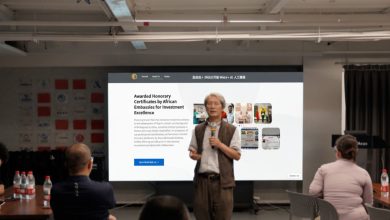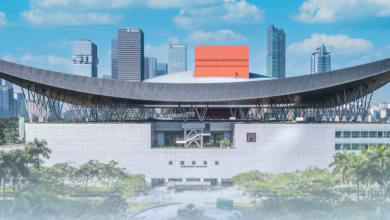
Shenzhen’s Property Market at a Crossroads: How Trump’s 104% Tariff Shakes China’s Tech Hub
Shenzhen, China’s southern economic powerhouse and a global tech manufacturing hub, faces an uncertain real estate future as former U.S. President Donald Trump’s proposed 104% additional tariffs threaten its export-driven economy. With over 20% of Shenzhen’s exports destined for the U.S., the looming trade war escalation could ripple through the city’s job market, consumer spending, and property demand.
This article examines:
- The economic logic behind Trump’s tariff strategy
- Short-term shocks to Shenzhen’s housing market
- Long-term resilience factors, from policy support to industrial upgrading
1. Trump’s “Economic Warfare” – Why 104% Tariffs?
1.1 America’s Fiscal Crisis & Trade War Calculus
Trump’s aggressive tariff policy stems from three key objectives:
- Revenue Generation – With U.S. national debt surpassing 37 trillion**, tariffs on Chinese imports (targeting a **50% surcharge on trade surplus goods**) could yield **37trillion∗∗,tariffsonChineseimports(targetinga∗∗50300–500 billion annually.
- Supply Chain Reshuffling – Forcing global companies to choose between U.S.-aligned or China-centric production networks.
- Triggering Capital Flight – A manufactured crisis could drive investors back to U.S. bonds and stocks.
Shenzhen’s Vulnerability:
- The city’s electronics, machinery, and textile sectors (40% of exports) face immediate profit squeezes.
- Companies may cut jobs or wages, weakening homebuyer purchasing power.
1.2 China’s Countermeasures
Beijing’s retaliation includes:
- Matching tariffs on U.S. agricultural and energy imports.
- Export controls on rare earths and critical minerals.
- Unused leverage: Potential restrictions on Apple, Boeing, or semiconductor trade.
Key Quote:
“China holds the world’s factories; America holds the dollar’s purchasing power. This is a clash of systems.” – Trade analyst cited in Caijing.
2. Immediate Impact on Shenzhen’s Property Market
2.1 Demand-Side Pressures
- Export sector layoffs could shrink the pool of qualified homebuyers.
- Investor caution: Secondary home transactions in Nanshan (tech hub) dipped 8% MoM in March 2025.
- Price sensitivity: Developers like Vanke offer 10–15% discounts on inventory homes.
2.2 Policy Lifelines
To offset economic headwinds, authorities are deploying:
- Interest rate cuts: Mortgage rates may drop another 0.5% (following Q1’s 1.25% reduction).
- Local subsidies: Shenzhen’s “Stable Growth 2025” plan includes 50,000 RMB home-purchase vouchers for first-time buyers.
- Relaxed curbs: Non-residents can now buy property after 1 year (vs. 3 years previously).
3. Long-Term Outlook: Crisis or Opportunity?
3.1 Industrial Upgrading as a Buffer
Shenzhen’s pivot to high-end manufacturing could soften the blow:
- Semiconductors: SMIC’s new 28nm chip plant in Pingshan will employ 12,000.
- EVs & Batteries: BYD’s expansion fuels demand for worker housing near Dayun.
- Government backing: Guangdong pledges 200 billion RMB for tech parks.
Case Study: Huawei’s R&D employees (avg. salary 1.2M RMB/year) are driving luxury home sales in Longgang.
3.2 Demographic Resilience
- Talent inflows: Shenzhen added 410,000 new residents in 2024, mostly aged 25–35.
- Rental yields stay strong: Futian District apartments maintain 3.8% returns, attracting capital fleeing volatile stocks.
4. Investor Strategies for Turbulent Times
4.1 Safe-Haven Assets
- Core urban areas: Properties near metro lines (e.g., Line 11’s Bao’an stations) resist downturns.
- School districts: Homes affiliated with Shenzhen Middle School command 30% premiums.
4.2 Bargain Hunting
- Distressed sales: Some factory owners offload villas in Dapeng Peninsula at 2019 prices.
- Land auctions: State developers (e.g., China Resources) still bid aggressively for Qianhai plots.
While Trump’s tariffs present short-term pain, Shenzhen’s innovation ecosystem and policy flexibility position it to emerge stronger. The city’s property market—like China’s economy—must adapt to a fractured global order.
Final Advice:
- First-time buyers: Wait for Q3 rate cuts before locking in mortgages.
- Upgraders: Target 120–144㎡ units in tech corridors (e.g., Guangming Science City).
- Speculators: Avoid overleveraging; liquidity risks loom.





